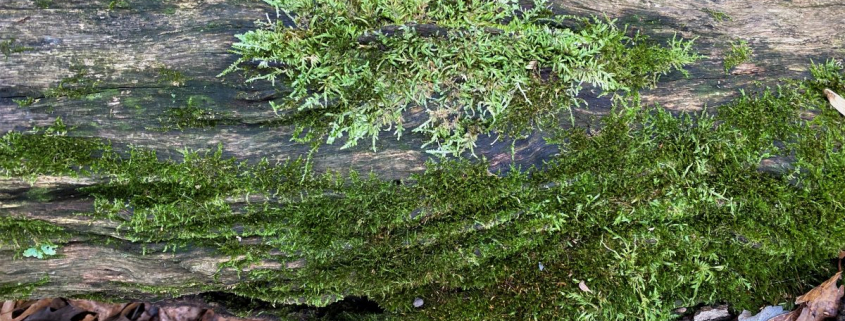Some Borrowed Do’s and Don’ts of Wildlife Photography
Reflections on the Adequacy of my Photographs
As all of my regular readers know, I focus these Great Blue Heron photo-essay Posts on mostly my own wanderings into terrestrial ecosystems. Trees, wildflowers, fungi, and special places account for most of my attention, photographs, observations, and reflections. You know, too, that I rely unabashedly on my iPhone camera. However, you’ve heard me question whether the time is right to shift to a camera with which I can better capture macro and telephoto images.
Macro would allow me to photograph flowers, leaves, butterflies, mushrooms, mosses, and lichens with greater clarity and in more detailed presentation. This tree moss is a decent image, yet it falls short of perfection. However, for my current purposes in complementing these Great Blue Heron observations and reflections, I remain satisified.

I am far less pleased with my ability to capture the diverse wildlife I often encounter. Here’s a barred owl via iPhone that appears as little more than a blur. Sure, most birders can identify it as a barred owl, yet the image requires interpretation and a bit of imagination.
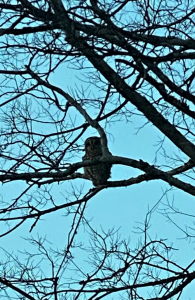
And, likewise, I failed to capture more than a barely adequate image of my Posts’ namesake image, a great blue heron.
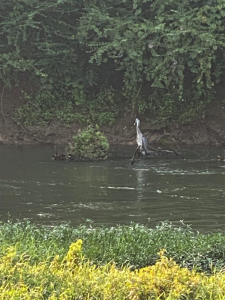
Same for the coopers hawk in my backyard oak tree.
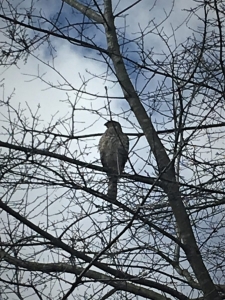
For now, I shall continue to contemplate whether and when I should shift gears. I don’t intend to make a rash decision.
Do’s and Don’ts of Wildlife Photography
I recently secured permission to publish a concise narrative (within this GBH Post) for capturing wildlife images. The writer echoes the sentiment-context I have employed since I first began issuing my Posts with my own Nature photos: Taking pictures of wildlife and showing others how beautiful they are can be a great way to educate, inform, and even change the way we see them.
Here’s is the unedited article in its entirety:
Do’s and Don’ts of Wildlife Photography
(With Permission of author, Isabelle Cameron)
Some of the most stunning images ever captured are those of the earth’s majestic animals; after all, nothing makes us happier than seeing them living freely. Taking pictures of wildlife and showing others how beautiful they are can be a great way to educate, inform, and even change the way we see them.
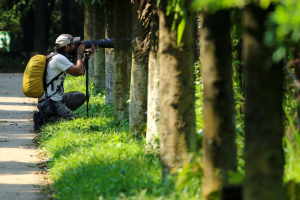
Photo from Author
For wildlife enthusiasts, taking these snapshots of a moment in time is more possible than ever, as modern technology has allowed more people to become amateur photographers. However, it’s not as simple as pointing the camera and hitting the shutter button; there are many things that you have to take into consideration before heading out into the wilderness. So, we’ve compiled a list of do’s and don’ts to make sure you get the right shot and more below.
Do’s
Do make sure you research the species you want to photograph. For example, if you want to shoot images of local migrant birds, you should know what time of year they are present and their habitat. Consider heading to the habitat ahead of time and getting oriented with the place you’re shooting in, gaining an awareness of where you are allowed to go and what is off limits.
Do use the right equipment; after all, it’s very unlikely you’ll stumble across an animal fast asleep or find it posing for your snap. So, ideally, having a mirrorless camera from the Sony Alpha or Fujifilm X-Pro ranges would be beneficial. This is because they’re lightweight and have a fast shutter speed that will help you get the best images even if the animal is on the move. Then, adding in something such as a Sigma 120-600mm super-telephoto would be a great addition to get those super sharp shots.
Do be patient; it’s one of the keys to photographing wildlife; as we’ve already mentioned, they’re not going to sit still. The key to getting a amazing shot is patience; if you can spend as much time as possible in safe proximity to your subject, you’re more likely to get those unforgettable images. Enjoy the moments you get to spend with the animals and treasure them, maybe even take the time to put your camera down and take in the surroundings and the natural wonders in front of you from time to time too. You won’t regret it.
Don’ts
Don’t feed the wild animals or try to lure them with food of some type. Foods that animals wouldn’t usually eat can be harmful; even bread isn’t the best thing to feed a wild bird despite what’s considered normal. These animals are independent and don’t need to rely on humans for food; it’s vitally important that you avoid interaction and leave them to their habitat.
Don’t try to get as close as possible to your subject, as most animals are wary of humans. Remember, these are wild animals, so don’t crowd or harass them by making sounds to get their attention. For example, if you were to get close to a brown bear and some cubs, you need to know that they don’t understand our behavior and could react to your actions, which could be dangerous for you and the animal.
Don’t forget to include the surroundings in your images; while there is a time for close-up images taken with a zoom lens, the best shots are often the well-composed shots that show the habitat, the background, and the animal itself. If you can get all the components in the picture, you can almost be telling a story in one shot, which is much more of a compelling image.
I am grateful for permission to embed the informed insight of others to extend my Great Blue Heron Mission: Educate, inspire, and enable readers and listeners to understand, appreciate, and enjoy Nature… and accept and practice Earth Stewardship.
Reminder of my Personal and Professional Purpose, Passion, and Cause
If only more of us viewed our precious environment through the filters I employ. If only my mission and vision could be multiplied untold orders of magnitude:
Mission: Employ writing and speaking to educate, inspire, and enable readers and listeners to understand, appreciate, and enjoy Nature… and accept and practice Earth Stewardship.
Vision:
- People of all ages will pay greater attention to and engage more regularly with Nature… and will accept and practice informed and responsible Earth Stewardship.
- They will see their relationship to our natural world with new eyes… and will understand more clearly their Earth home.
Tagline/Motto: Steve (Great Blue Heron) encourages and seeks a better tomorrow through Nature-Inspired Living!
Note: All blog post images created & photographed by Stephen B. Jones unless otherwise noted. Please circulate images with photo credit: “©2022 Steve Jones, Great Blue Heron LLC. All Rights Reserved.”
Another Note: If you came to this post via a Facebook posting or by an another route, please sign up now (no cost… no obligation) to receive my Blog Post email alerts: http://eepurl.com/cKLJdL
And a Third: I am available for Nature-Inspired Speaking, Writing, and Consulting — contact me at steve.jones.0524@gmail.com
Steve’s Three Books
I wrote my books Nature Based Leadership (2016), Nature-Inspired Learning and Leading (2017), and Weaned Seals and Snowy Summits: Stories of Passion for Place and Everyday Nature (2019; co-authored with Dr. Jennifer Wilhoit) to encourage all citizens to recognize and appreciate that every lesson for living, learning, serving, and leading is either written indelibly in or is powerfully inspired by Nature.
I began writing books and Posts for several reasons:
- I love hiking and exploring in Nature
- I see images I want to (and do) capture with my trusty iPhone camera
- I enjoy explaining those images — an educator at heart
- I don’t play golf!
- I actually do love writing — it’s the hobby I never needed when my career consumed me
- Judy suggested my writing is in large measure my legacy to our two kids, our five grand kids, and all the unborn generations beyond
- And finally, perhaps my books and Blogs could reach beyond family and touch a few other lives… sow some seeds for the future


All three of my books (Nature Based Leadership; Nature-Inspired Learning and Leading; Weaned Seals and Snowy Summits) present compilations of personal experiences expressing my (and co-author Dr. Wilhoit for Weaned Seals and Snowy Summits) deep passion for Nature. All three books offer observations and reflections on my relationship to the natural world… and the broader implications for society. Order any and all from your local indie bookstore, or find them on IndieBound or other online sources such as Amazon and LifeRich.

